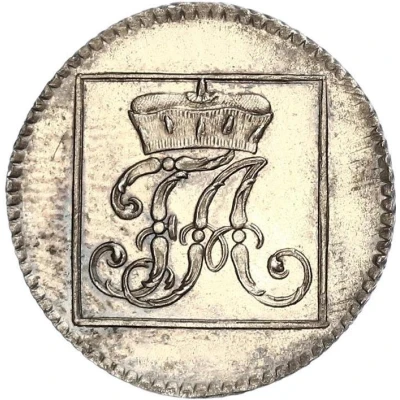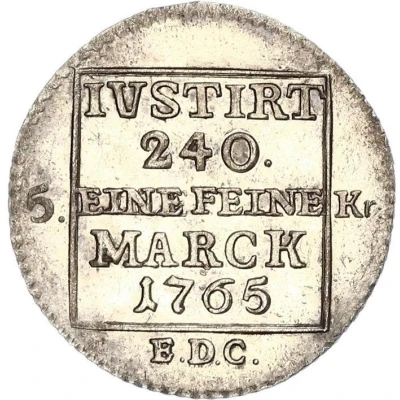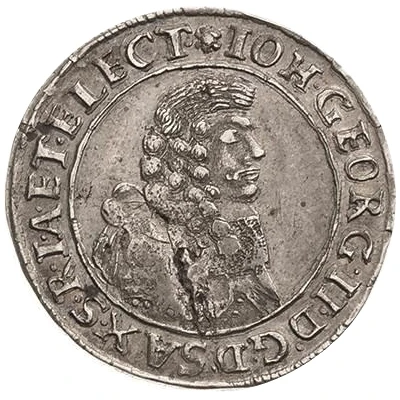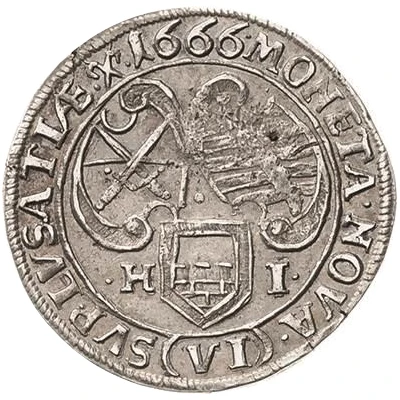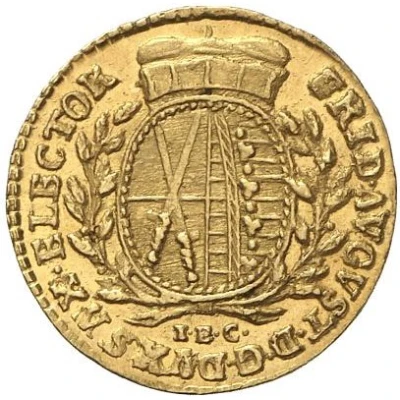
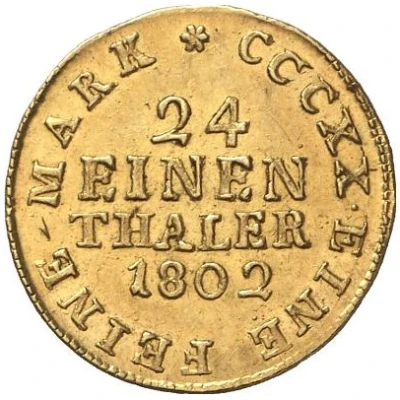

© Fritz Rudolf Künker GmbH & Co. KG, Osnabrück and Lübke & Wiedemann KG, Leonberg
1⁄24 Thaler - Frederick August III Gold pattern
1802 year| Gold (.986) | 3.49 g | - |
| Issuer | Electorate of Saxony (Albertinian Line) (German States) |
|---|---|
| Issuer | Electorate of Saxony (Albertinian Line) (German States) |
| Prince elector | Frederick Augustus III (Friedrich August III) (1763-1806) |
| Prince elector | Frederick Augustus III (Friedrich August III) (1763-1806) |
| Type | Pattern |
| Type | Pattern |
| Year | 1802 |
| Year | 1802 |
| Value | 1 Groschen = 1⁄24 Thaler |
| Value | 1 Groschen = 1⁄24 Thaler |
| Currency | Thaler (1493-1805) |
| Currency | Thaler (1493-1805) |
| Composition | Gold (.986) |
| Composition | Gold (.986) |
| Weight | 3.49 g |
| Weight | 3.49 g |
| Shape | Round |
| Shape | Round |
| Technique | Milled |
| Technique | Milled |
| Orientation | Medal alignment ↑↑ |
| Orientation | Medal alignment ↑↑ |
| Demonetized | Yes |
| Demonetized | Yes |
| Updated | 2024-10-05 |
| Numista | N#271090 |
|---|---|
| Rarity index | 97% |
Reverse
Value and date
Script: Latin
Lettering:
CCCX X: EINE FEINE MARCK
24
EINEN
THALER
1802
Interesting fact
One interesting fact about the Pattern 1⁄24 Thaler - Frederick August III (Gold pattern) 1802 from Electorate of Saxony (Albertinian Line) (German States) is that it was minted during a time of great economic and political change in Europe. The coin was issued in 1802, just a few years before the Napoleonic Wars, which had a profound impact on the European economy and monetary systems. The fact that it was made of gold (.986) and weighs 3.49 g suggests that it was a high-value coin, likely used for large transactions or as a store of value. Additionally, the fact that it was minted in the Electorate of Saxony, which was a powerful state in the German States, speaks to the region's economic and political influence at the time.
